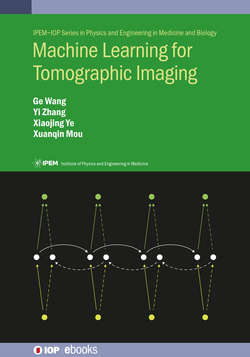Читать книгу Machine Learning for Tomographic Imaging - Professor Ge Wang - Страница 17
На сайте Литреса книга снята с продажи.
0.6 More to learn and what to expect next
ОглавлениеAs implied by figures 0.5 and 0.6, there are too many relevant papers to read, and the number of such papers is growing rapidly. After reading this book systematically or selectively, you will need more time to master more materials, dive in more deeply, and practice for better skills. According to PwC (https://www.pwc.com/gx/en/issues/data-and-analytics/publications/artificial-intelligence-study.html in June 2017), AI will yield a global GDP increase of 14% in 2030, and a top area AI affects is healthcare. In such an expanding phase of AI/ML R&D, we have no choice but to pursue continuous learning—papers, books, online materials, and hands-on projects.
Despite all the above positive comments on AI/ML, this field has previously experienced two winters, and it is natural to wonder if we will sooner or later enter another winter of AI/ML. All this depends on how much and how quickly we can continue advancing the field and meeting the majority’s expectations. Although the future is often unpredictable but sometimes indeed inventable (Virginia Tech’s old logo ‘Invent the Future’), we tend to be very optimistic about the future of AI/ML in the long run, and are particularly hopeful for several directions of development.
There are two scientific approaches for reasoning—deduction and induction. Accordingly, we have two associated schools of AI/ML. Deduction goes from general to specific, and is a top-down approach. Decades ago, research on rule-based expert systems was popular, and the fifth generation computer was a hot topic. In this context, it was hoped to reason from general rules to specific claims. On the other hand, induction works from data toward knowledge or information. This is bottom-up or data-driven. The recent champions of the ImageNet contest developed their deep learning programs in a data-driven fashion. There are great opportunities to merge these two approaches in the future. Knowledge graphs and self-supervised learning are two ideas along this direction.
Also, AI/ML and neuroscience/psychiatry are closely intertwined and mutually promoting. For example, studies on the human vision system are an integral part of neuroscience research, which played an instrumental role in the development of AI/ML and suggested a mechanism for cellular-level processing and interconnection for visual perception and image analysis. New findings and insights in AI/ML and neuroscience will continue promoting each other. Arguably, human intelligence is closely related to natural language understanding and expression. It is believed by many that an important direction of AI/ML development is natural language processing (NLP) (figure 0.8).
Figure 0.8. NLP is believed to be an important direction for development of AI/ML.
Yet another outside-the-box approach is quantum computing, but no-one is sure when its prime time will come. However, if it becomes practical, AI/ML will be revolutionized. For example, our proposed 'SPIN' network may be implemented via quantum computing. A few days ago, Google announced a quantum supremacy, and heated on-going discussions on this topic (https://www.sciencenews.org/article/google-quantum-computer-supremacy-claim). We cannot exclude the possibility that intelligence is essentially a quantum phenomenon and must be implemented through quantum computing. Let us continue making and enjoying our AI/ML related efforts.
